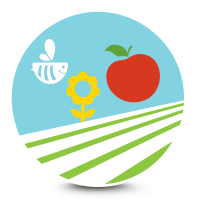
Good practices to boost pollination in the field
GOOD PRACTICE FOR BOOST POLLINATION IN THE FIELD
 To ensure that the services provided by pollinators continue in agriculture, it is necessary to know more about the benefits and factors that influence the populations of these animals. it is necessary to know more about the benefits and factors that influence the populations of these animals, food safety may be compromised, reducing crop yields, negative effect on the economy. It is very important to identify and use sustainable management practices that reduce the negative impacts caused by humans on pollinators, promote the conservation and diversity of native pollinators, and conserve and restore natural areas necessary to optimize pollinator services in agricultural areas.
To ensure that the services provided by pollinators continue in agriculture, it is necessary to know more about the benefits and factors that influence the populations of these animals. it is necessary to know more about the benefits and factors that influence the populations of these animals, food safety may be compromised, reducing crop yields, negative effect on the economy. It is very important to identify and use sustainable management practices that reduce the negative impacts caused by humans on pollinators, promote the conservation and diversity of native pollinators, and conserve and restore natural areas necessary to optimize pollinator services in agricultural areas.
 Conserve natural areas, maintaining native vegetation next to the growing area
Conserve natural areas, maintaining native vegetation next to the growing area
 Create a direct channel of contact with beekeepers. it is necessary to know more about the benefits and factors that influence the populations of these animals (DOU 04/01/2013), It indicates that it is the responsibility of farmers warn beekeepers present in a culture of 6km radius, and 48 hours in advance, on aerial spraying activities.
Create a direct channel of contact with beekeepers. it is necessary to know more about the benefits and factors that influence the populations of these animals (DOU 04/01/2013), It indicates that it is the responsibility of farmers warn beekeepers present in a culture of 6km radius, and 48 hours in advance, on aerial spraying activities.








Sorry, the comment form is closed at this time.